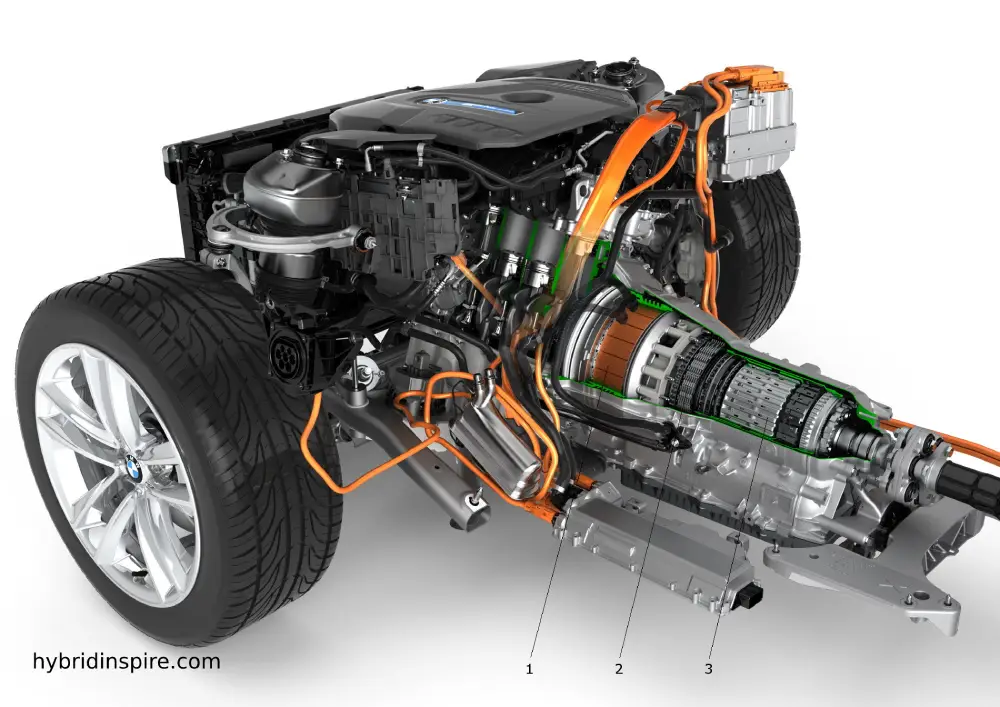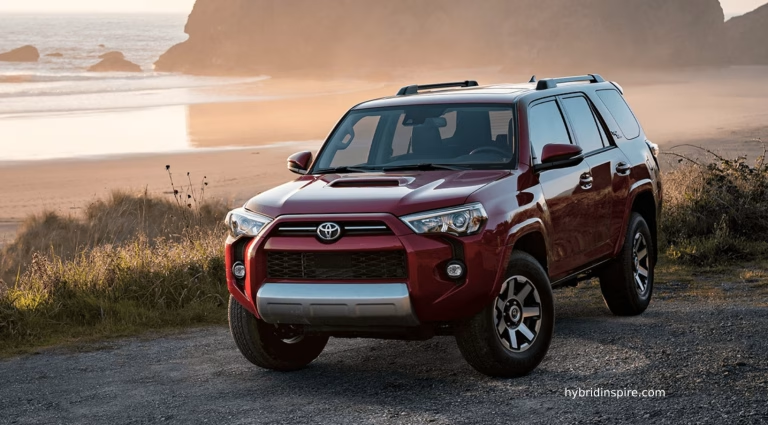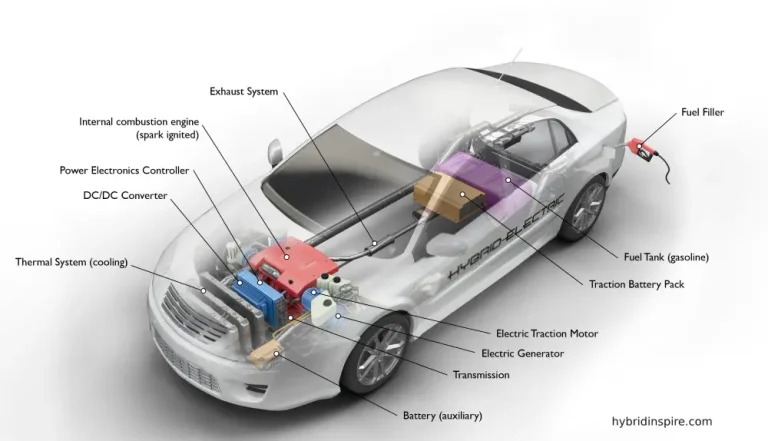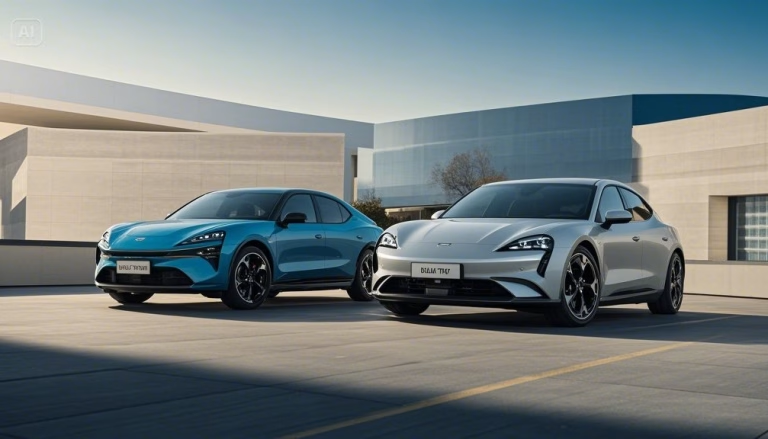Hybrid Powertrains: The Future of Efficient Driving
Table of Contents
Introduction
In today’s environmentally conscious world, automotive manufacturers are constantly developing technologies that reduce emissions while maintaining or improving vehicle performance. Among these innovations, hybrid powertrains stand out as one of the most significant advancements in modern automotive engineering. Combining traditional internal combustion engines with electric propulsion systems, hybrid vehicles offer a balanced approach to efficiency and performance that is reshaping our driving experience.
What Is a Hybrid Powertrain?
A hybrid powertrain is an integrated system that utilizes two or more distinct power sources to propel a vehicle. In most commercial applications, this involves the combination of a conventional internal combustion engine (ICE) with one or more electric motors powered by a battery pack. This dual-source approach allows vehicles to optimize energy usage, resulting in better fuel economy and reduced emissions compared to traditional combustion-only vehicles.
How Hybrid Powertrains Work
At the heart of a hybrid vehicle’s operation is a sophisticated control system that determines when to use the engine, the electric motor, or both simultaneously. This intelligent power management considers factors such as:
- Current vehicle speed
- Acceleration demands
- Battery charge level
- Overall driving conditions
- Driver input
During low-speed operation or light acceleration, many hybrids rely primarily on their electric motors, which are highly efficient in these conditions. When more power is needed—such as during highway cruising or steep climbs—the internal combustion engine activates to provide additional power.
One of the most innovative aspects of hybrid powertrains is regenerative braking, which captures kinetic energy during deceleration that would otherwise be lost as heat in conventional braking systems. This recovered energy is converted to electricity and stored in the battery for later use, further enhancing efficiency.
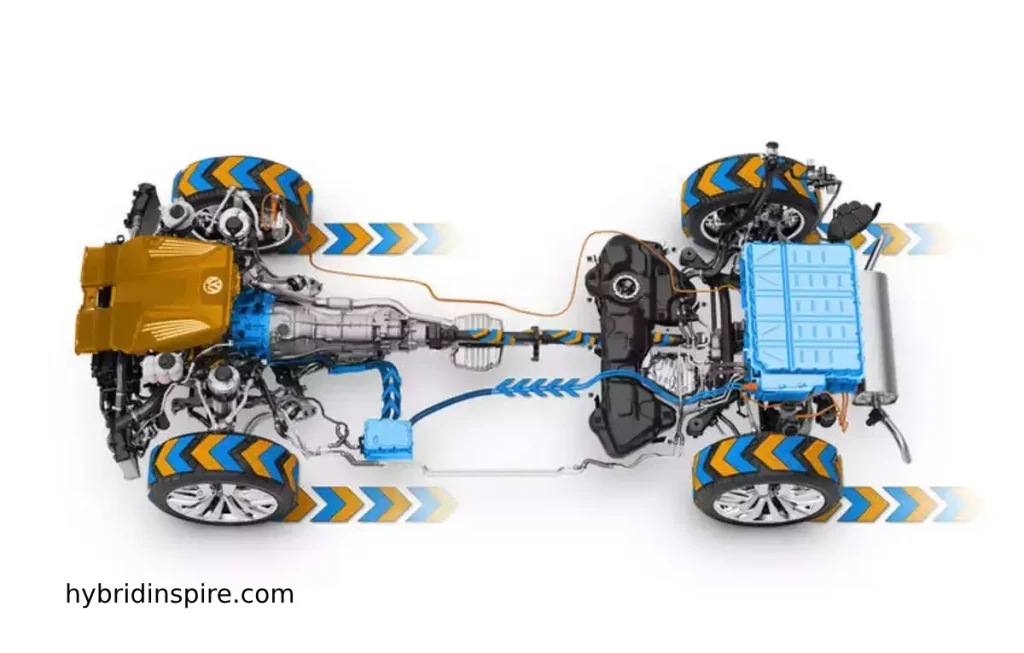
Types of Hybrid Powertrains
Hybrid powertrains come in several configurations, each with unique characteristics designed for different driving needs:
1. Parallel Hybrid Systems
In parallel hybrids, both the internal combustion engine and the electric motor can directly power the wheels. These systems allow the vehicle to operate in several modes:
- Electric-only mode for low-speed driving
- Engine-only mode for highway cruising
- Combined power for maximum acceleration or climbing
The Honda Insight and earlier Toyota Prius models utilize parallel hybrid configurations.
2. Series Hybrid Systems
Series hybrids use the internal combustion engine solely as a generator to produce electricity. The wheels are driven exclusively by the electric motor. This configuration:
- Allows the engine to operate at its most efficient speed
- Eliminates the need for conventional transmissions
- Provides smooth, continuous acceleration
Examples include the BMW i3 with Range Extender and the Chevrolet Volt when operating in extended-range mode.
3. Power-Split (Series-Parallel) Hybrids
Power-split hybrids represent the most complex and versatile hybrid configuration. They incorporate elements of both series and parallel systems, allowing the power flow to be continuously varied between the engine and electric motor(s) for optimal efficiency. The Toyota Prius and Ford Escape Hybrid use this sophisticated system, which employs a planetary gear set to distribute power between the sources.
4. Plug-in Hybrid Electric Vehicles (PHEVs)
PHEVs take the hybrid concept further by incorporating larger battery packs that can be charged from external electric power sources. They offer:
- Extended all-electric driving range (typically 20-50 miles)
- Reduced fuel consumption for daily commuting
- The flexibility of conventional hybrid operation for longer trips
Popular PHEV models include the Toyota RAV4 Prime, Chrysler Pacifica Hybrid, and various luxury options from BMW, Volvo, and Mercedes-Benz.
5. Mild Hybrid Systems
Mild hybrids incorporate smaller electric motors and batteries that cannot power the vehicle independently. Instead, they:
- Assist the engine during acceleration
- Enable start-stop functionality to reduce idling
- Provide modest fuel economy improvements
Many automakers, including Mercedes-Benz (EQ Boost) and Audi (MHEV), have widely adopted mild hybrid technology across their model ranges.
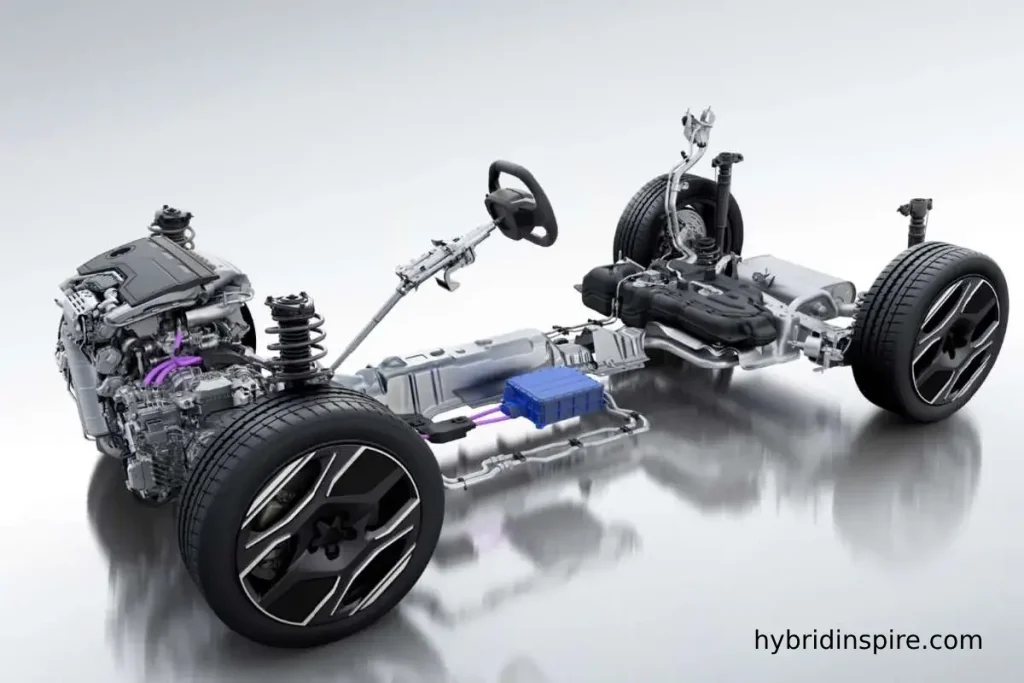
Benefits of Hybrid Powertrains
Improved Fuel Economy
The primary benefit of hybrid powertrains is significantly improved fuel efficiency. By strategically using electric power and optimizing engine operation, hybrids typically achieve 20-60% better fuel economy than their conventional counterparts. This translates to fewer trips to the gas station and substantial savings over the vehicle’s lifetime.
Reduced Emissions
With better fuel efficiency comes proportionally reduced carbon dioxide (CO2) emissions. Additionally, hybrid vehicles produce fewer nitrogen oxides (NOx) and particulate matter, contributing to better air quality in urban environments. The ability to operate in electric-only mode in low-speed traffic situations further reduces local emissions where they often matter most.
Enhanced Performance
Contrary to early misconceptions, modern hybrid powertrains often deliver superior performance compared to conventional drivetrains. Electric motors provide instant torque from zero RPM, complementing internal combustion engines that develop peak power at higher RPMs. This synergy results in:
- Quicker acceleration from a standstill
- More responsive throttle response
- Smoother, more linear power delivery
Regenerative Braking
The ability to recapture energy during deceleration through regenerative braking represents a fundamental efficiency advantage for hybrid vehicles. This technology converts kinetic energy back into electrical energy instead of wasting it as heat, extending driving range and reducing brake wear.
Quieter Operation
During electric-only operation, hybrid vehicles run virtually silently, creating a more pleasant driving experience and reducing noise pollution in urban areas. Even when the engine is running, many hybrids are engineered for quieter operation than their conventional counterparts.
Challenges and Considerations
While hybrid powertrains offer numerous advantages, they also present certain challenges:
System Complexity
The integration of two power sources, sophisticated control systems, and power management hardware increases the complexity of hybrid vehicles. This can potentially lead to higher maintenance costs for specialized components and require technicians with specific training.
Additional Weight
Battery packs, electric motors, and associated control systems add weight to hybrid vehicles, which can partially offset efficiency gains. However, manufacturers continue to develop lighter components and optimize vehicle designs to minimize this impact.
Higher Initial Cost
The advanced technology in hybrid powertrains typically results in higher purchase prices compared to conventional vehicles. Though this premium has decreased over time, it remains a consideration for cost-conscious buyers. Many purchasers find that fuel savings and potential tax incentives ultimately offset this initial premium.
Battery Lifespan and Replacement
While modern hybrid batteries are designed for long-term durability, they will eventually require replacement. Most manufacturers offer warranties of 8-10 years or 100,000+ miles on hybrid components, but replacement costs can be significant for out-of-warranty vehicles.
The Future of Hybrid Powertrains
Hybrid technology continues to evolve rapidly, with several emerging trends shaping its future:
Integration with Autonomous Driving
As autonomous driving technology advances, hybrid powertrains provide the ideal platform for the increased electrical demands of sensors, processors, and control systems. The extended electric range also supports the continuous operation needed for self-driving capabilities.
Wireless Charging
Emerging wireless charging technology promises to make plug-in hybrids even more convenient, allowing vehicles to charge simply by parking over charging pads without physical connections.
Advanced Battery Technology
Ongoing developments in battery chemistry and design are yielding energy storage systems with higher capacity, faster charging, longer lifespans, and lower costs. These improvements will further enhance the capabilities and value proposition of hybrid vehicles.
Hybrid Supercapacitors
Some manufacturers are exploring the integration of supercapacitors with conventional batteries in hybrid systems. Supercapacitors excel at quickly absorbing and releasing large amounts of energy, making them ideal for capturing regenerative braking energy and providing boost power during acceleration.
Expansion into New Vehicle Categories
Hybrid technology is expanding beyond passenger cars into SUVs, trucks, and commercial vehicles. Ford’s F-150 PowerBoost hybrid pickup and various hybrid SUV offerings demonstrate the versatility of hybrid powertrains across diverse vehicle types.
Choosing a Hybrid: Factors to Consider
When evaluating hybrid vehicles, prospective buyers should consider several factors:
Driving Patterns
- Mostly city driving: Full hybrids excel in stop-and-go traffic where regenerative braking maximizes efficiency
- Mixed driving: Plug-in hybrids offer the best of both worlds for combined city and highway use
- Mostly highway driving: Mild hybrids may provide sufficient benefits with lower cost
Available Infrastructure
For plug-in hybrids, consider the availability of charging infrastructure at home, work, and along frequent travel routes. Without regular charging, PHEVs operate essentially as conventional hybrids, reducing their efficiency advantage.
Total Cost of Ownership
Look beyond the purchase price to consider:
- Fuel savings over your expected ownership period
- Available tax incentives and rebates
- Projected maintenance costs
- Potential insurance differences
- Expected resale value
Environmental Impact
While all hybrids reduce emissions compared to conventional vehicles, different models achieve varying degrees of improvement. For the most environmentally conscious buyers, plug-in hybrids with substantial electric range typically offer the greatest emissions reductions.
Conclusion
Hybrid powertrains are like a well-balanced diet for your car—they blend the right elements to deliver fuel efficiency, lower emissions, and strong performance. Whether you’re eco-conscious, budget-savvy, or just tech-curious, hybrid vehicles offer an exciting alternative to traditional cars.
While they may not be the final destination in the electric revolution, hybrids are certainly an important mile marker on the road to a cleaner, smarter future.
FAQs
1. Are hybrid cars good for long-distance travel?
Absolutely! Hybrids can use gasoline for longer trips, so range anxiety is minimal.
2. Do I need to plug in all hybrid cars?
No. Only Plug-in Hybrids (PHEVs) need to be charged. Mild and full hybrids recharge on their own.
3. How long do hybrid batteries last?
Most hybrid batteries last 8–10 years or about 100,000 to 150,000 miles, with many lasting longer.
4. Are hybrid vehicles more expensive to maintain?
Initially, yes, but they save money over time with better fuel economy and less wear on engine components.
5. Can hybrids run without fuel?
Only Plug-in Hybrids (PHEVs) can run short distances without fuel. Mild and full hybrids still rely on gas.
Related: Click Here
For More: Hybrid Battery

